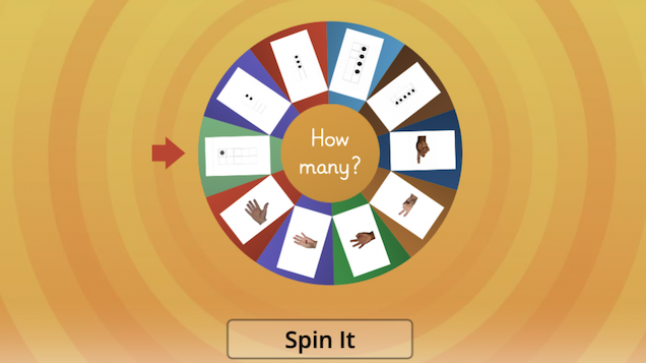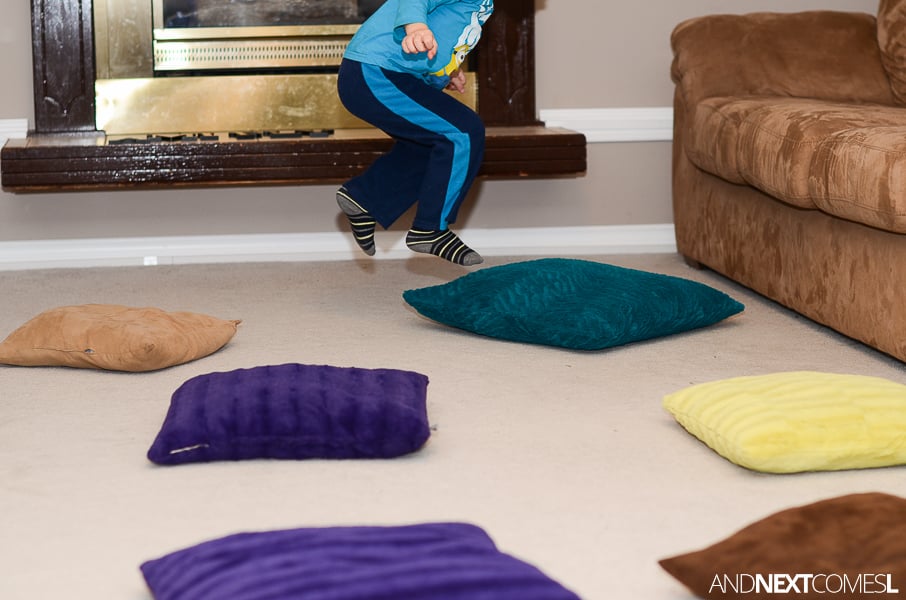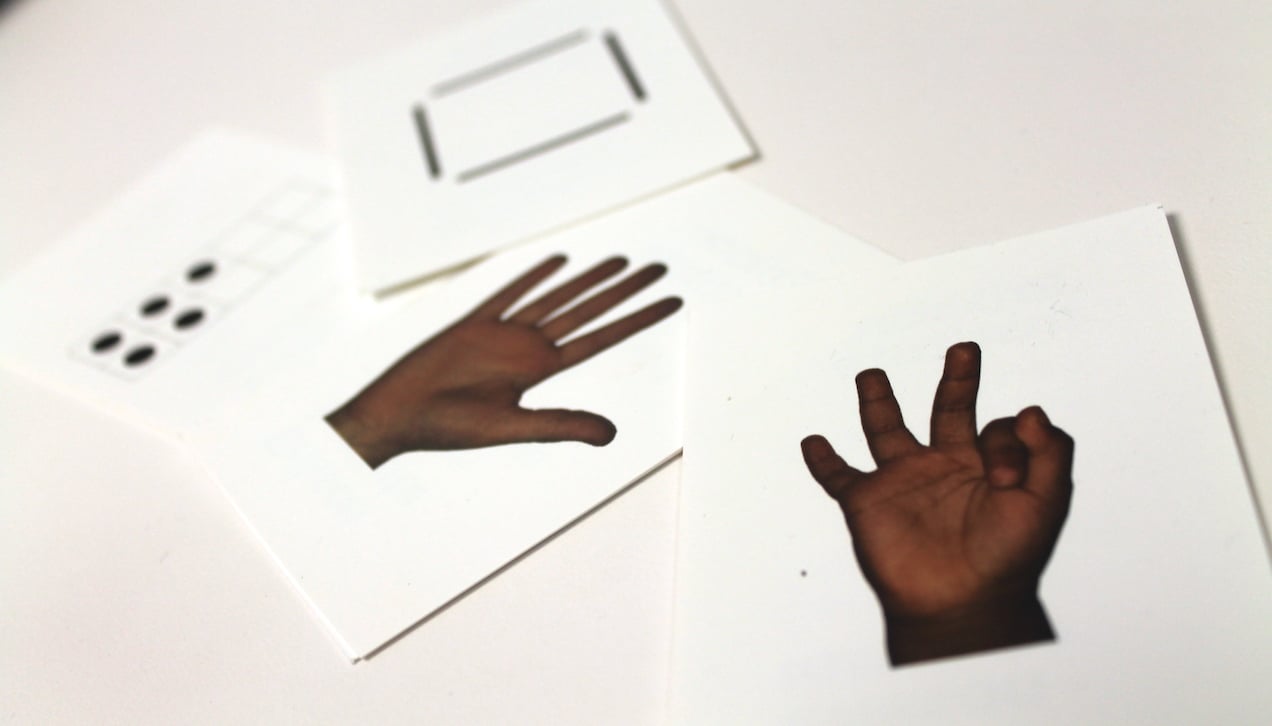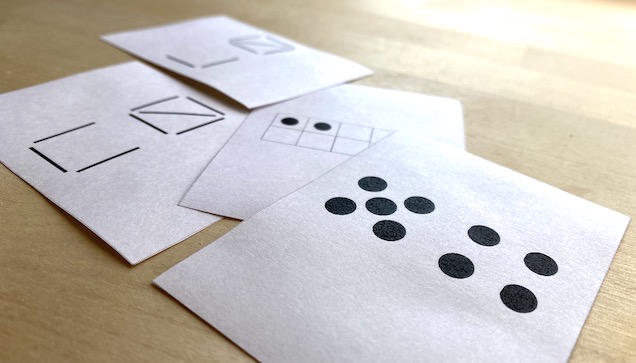Series: Focus on Play
New Use of Quantity Cards for Remote Preschool Math Games

The Collaborative sends a shout-out to all the hard-working early childhood teachers who have found ways to continue playing games during the Covid-19 pandemic. Whether teaching in-person with social distancing or online, the number one question we hear from teachers is how to adapt preschool math games for remote learning.
Elaine Bennett, an early years teacher in the UK, used our quantity cards to create an interactive subitizing spinner that generates random visual representations of quantities 1-5. We’ve happily shared the spinner (and another one she created with dice) with teachers here in Chicago and have seen how useful it is for preschool math games.
Here are some preschool game ideas that work equally well in person or online.
Three in a Row
Have each player create their own 3 x 3 array of 1-5 quantity cards, face up. Spin the spinner. Players can turn over a card if it shows the same representation of the quantity on the spinner (an exact match such as 3 fingers and 3 fingers). The first player to turn over three cards in a row wins the game.
Stepping Stones
Create a stepping stone path with sidewalk chalk (outside) or painters’ tape (inside). Children at home can create “stepping stones” with common household items such as paper plates, washcloths, or small pillows. Spin the spinner and have player jump that number of stepping stones. The player who completes the path first wins the game. When partners can’t play together, children can race the teacher or play against a stuffed animal at home.

Credit: AndNextComesL
Cover All BINGO
Have each player create their own 3 x 3 array of 1-5 quantity cards, face up. Spin the spinner. Players turn over all the cards that represent the same quantity as the shown on the spinner. For example, if the spinner shows 3 fingers, players can turn over cards with 3 fingers, 3 dots, 3 on the ten-frame, 3 tallies, etc. The first player to turn over all their cards wins the game.
Fill the Frame
Use a ten frame and two colors of game pieces such as red and black checkers. Two players take turns spinning and adding that number of pieces to the ten frame. The player who adds the tenth piece to fill the frame wins the game. When partners can’t play together, then children can race to fill their own frame first.
Keep on playing with math! It’s not easy, but we know the importance of math games, especially during remote learning. For other game ideas, see our collection of game-related posts.
Related Ideas

A New Focus for Familiar Card Games
Here you can learn much more about Quantity Cards and how they build an understanding of early math concepts such as cardinality and composing and comparing numbers.

Quantity Cards
These Quantity Card downloads are available and cater to different skill levels and ages. They include a variety of pictures or “suits” since matching quantities such as fingers and dots can help develop ideas about numbers and equivalence.